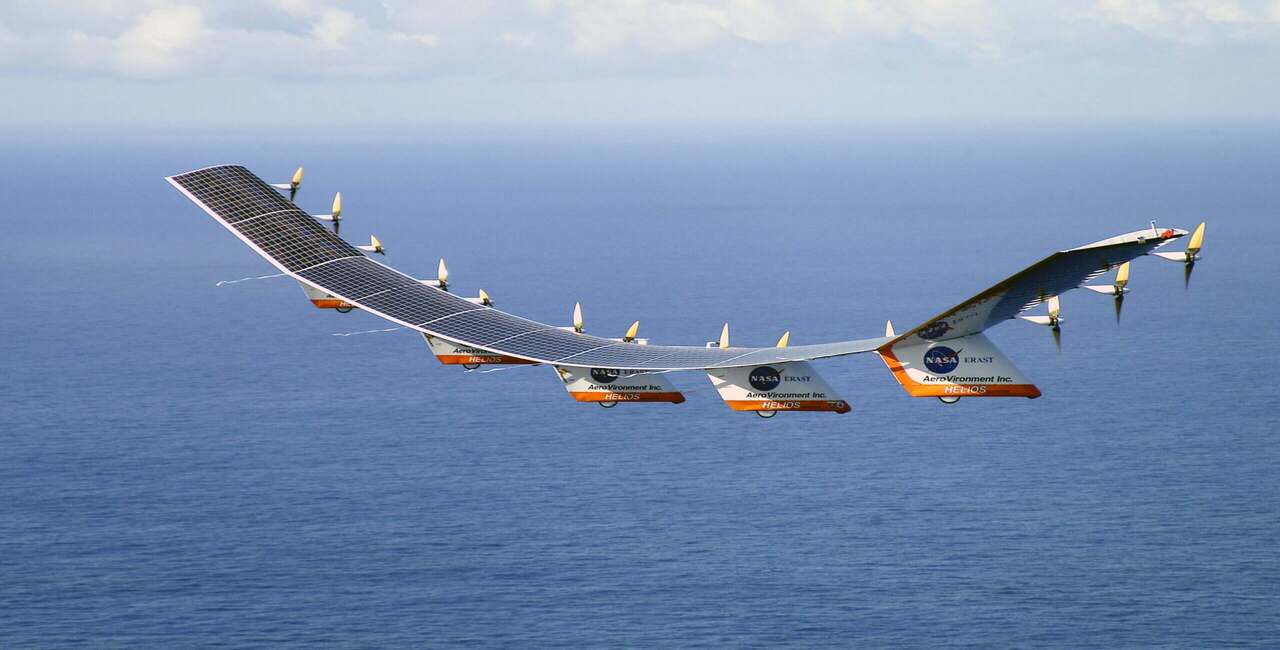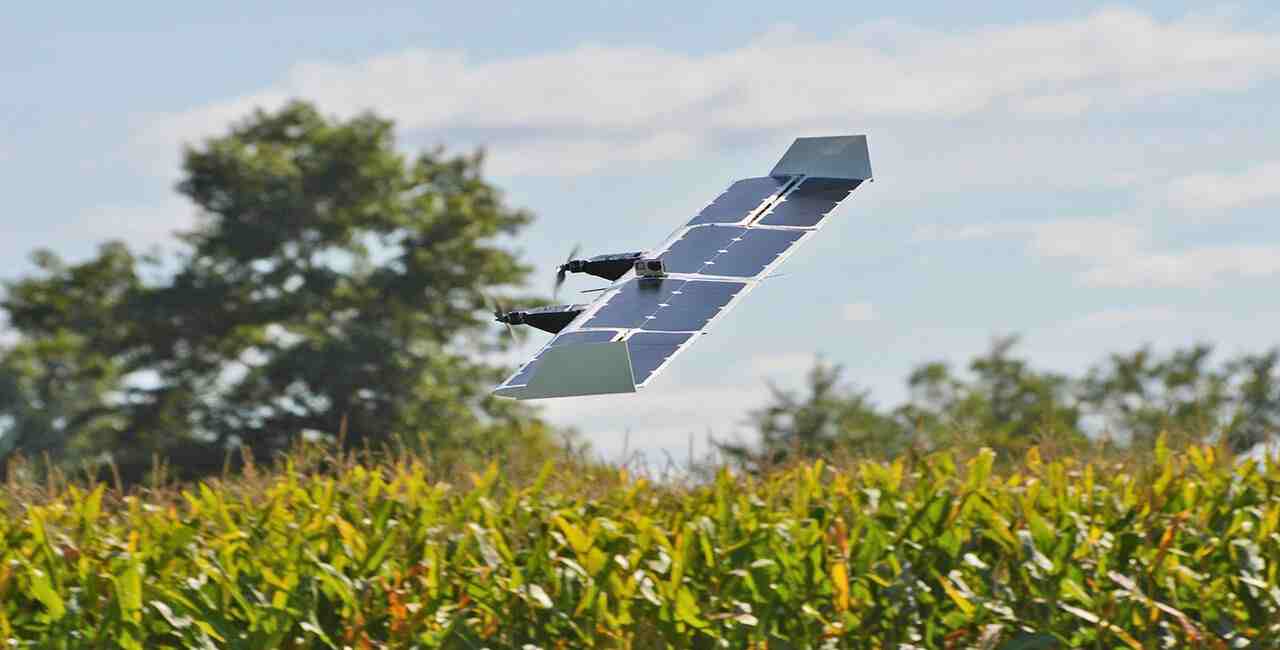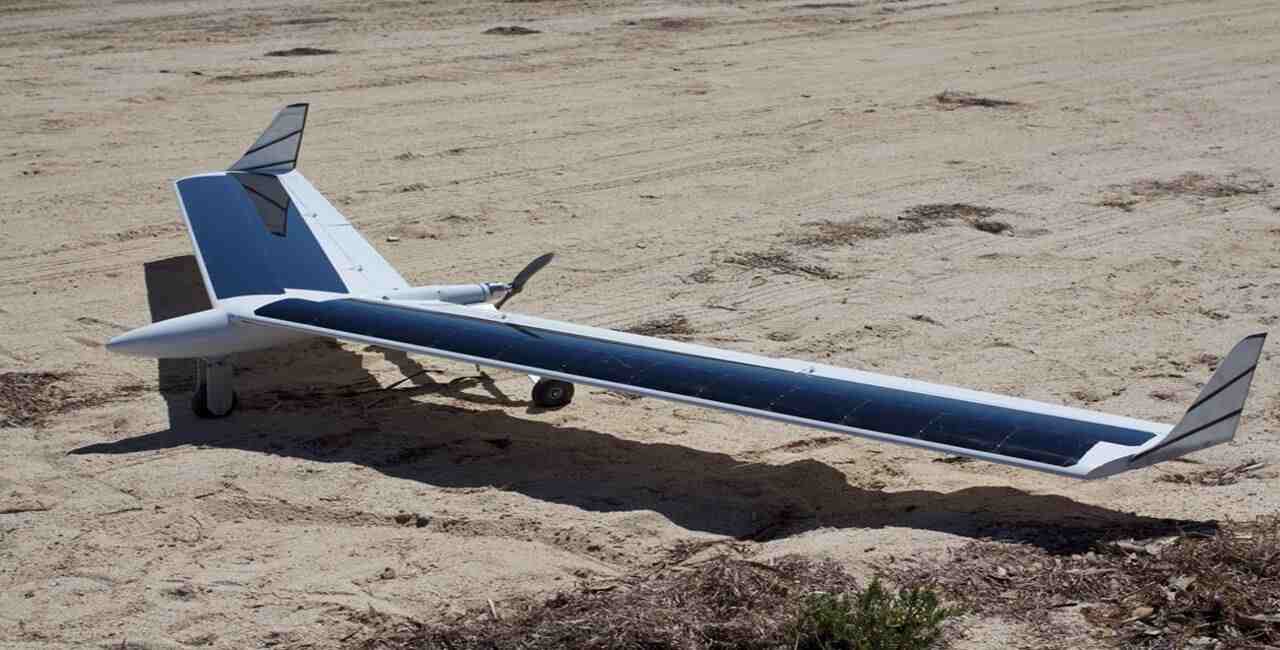How Solar-Powered Drones Could Change the Way We Monitor Our Planet

The development of drone technology has fundamentally changed how we observe and research our world. Drones are a vital tool for environmental monitoring, disaster management, and climate study due to their capacity to take high-resolution pictures and gather data from dangerous and remote locations.
Solar-powered drones are one of the most recent advancements in drone technology, and they have the potential to revolutionize the industry by enabling long-distance flights and lowering their environmental effect.
This article will examine the uses of solar-powered drones for planet monitoring, their advantages, as well as their drawbacks and technological limitations.
What Are Solar-Powered Drones?
Unmanned aerial vehicles (UAVs) that are fueled primarily by solar energy are known as solar-powered drones.
Their motors and onboard devices are powered by solar panels that transform solar energy into electricity. Due to this, solar-powered drones can fly for long amounts of time—from a few hours to several days—without having to refuel or recharge.
Drones that run on solar energy are frequently made of lightweight materials and have cutting-edge features like GPS, sensors, and cameras.
They are useful for a variety of uses, including environmental monitoring, crisis management, and climate research, due to their ability to fly at high altitudes and gather data from various environmental conditions.
Since they can function sustainably and affordably, solar-powered drones are a desirable choice for many applications. They are especially useful in remote and inhospitable locations where access to power sources may be limited.
Let’s see how Solar-Powered Drones can revolutionize various fields-
Solar-Powered Drones for Environmental Monitoring
A growing number of people are using solar-powered drones to watch the environment because of their adaptability and environmentally friendly construction.
These autonomous aerial vehicles (UAVs) have sensors and cameras that allow them to gather information on a variety of environmental factors, including air quality, water quality, and the condition of the vegetation.
Drones powered by solar energy have a number of benefits over drones powered by batteries. The drone's motors and sensors can be powered by solar panels on its torso or wings, which can transform sunlight into electricity.
This means that compared to drones powered by batteries, solar-powered drones can fly for extended periods of time and cover more ground.
Environmental surveillance is one of the primary uses for drones powered by solar energy. These drones can be used to gather information on the condition of the air and water, which is essential for identifying pollution and keeping track of the state of ecosystems.
Drones fueled by solar energy can also be used to track the health of forests and crops, giving farmers and environmentalists crucial information.
Drones that are powered by solar energy are promising new tools for environmental monitoring because they provide a practical and affordable way to gather vital information about the condition of our world.
In the coming years, these cutting-edge tools are likely to be used more and more frequently in environmental surveillance initiatives due to ongoing developments in drone and solar technology.
Remote Sensing with Solar-Powered Drones
The study of remote sensing involves gathering data about the environment at a distance, typically using sensors attached to satellites, aircraft, or drones.
Drones fueled by solar energy are being used for remote sensing more and more because they are economical and sustainable for gathering information on a variety of environmental factors.
Drones powered by solar energy have a number of benefits over drones powered by batteries. The drone's motors and sensors can be powered by solar panels on its torso or wings, which can transform sunlight into electricity.
This means that compared to drones powered by batteries, solar-powered drones can fly for extended periods of time and cover more ground. Cameras, multispectral sensors, and LiDAR are just a few of the remote sensing instruments that solar-powered drones can be fitted with.
These sensors can be used to gather information on a variety of environmental factors, including water purity, vegetation health, and land use.
Applications for the data gathered by these sensors include mapping, disaster reactions, and environmental monitoring.
Drones powered by solar energy provide a practical and economical method to gather important data for remote sensing applications. These cutting-edge tools are likely to become more common in remote sensing operations in the years to come as solar technology and drone design continue to progress.
Monitoring Climate Change with Drones

The health of our world and its inhabitants is being impacted by the urgent problem of climate change. A useful instrument for tracking climate change and its effects on the environment is emerging: drones. Particularly solar-powered drones provide an environmentally friendly and economically advantageous method to gather data on a variety of environmental factors related to climate change.
Cameras, multispectral sensors, and LiDAR are just a few of the sensors that drones can be fitted with. These sensors can be used to gather information on variations in temperature, precipitation, and vegetation cover. This information can then be used to monitor the development of climate change, its impacts on the environment, and the development of mitigation strategies.
Drones can also be used to gather information on the effects of climate change on animal populations, such as modifications to migration patterns, breeding habits, and habitat destruction. For creating successful conservation strategies and safeguarding endangered species, this knowledge is essential.
Overall, Drones are an effective tool for tracking environmental effects and climate change. These ground-breaking tools are likely to be used in monitoring climate change efforts more frequently in the years to come as drone technology and sensor design continue to progress.
Surveillance with the Help of Solar-powered Drones
Monitoring and keeping an eye on something for the sake of protection, security, or information gathering is known as surveillance. Drones that are solar-powered are being used more frequently for monitoring as they offer a viable and affordable means of keeping an eye on locations and activities from a distance.
Drones that run on solar energy can be fitted with a range of sensors and cameras that can be used to record high-definition pictures and videos of a location or activity. These drones offer real-time monitoring and surveillance capabilities because they can be programmed to fly over a particular region at predetermined intervals.
In comparison to conventional drones fueled by batteries, solar power has a number of benefits. The drone's motors and sensors can be powered by solar panels on its torso or wings, which can transform sunlight into electricity.
This means that compared to drones powered by batteries, solar-powered drones can fly for extended periods of time and cover more ground.
Border patrol, monitoring of vital infrastructure, and crisis response are just a few of the surveillance uses for solar-powered drones.
Additionally, they can be used for surveillance in remote or inhospitable locations where more conventional techniques may be impractical or expensive.
Eco-friendly Aerial Data Collection
The method of gathering data from the air using different kinds of sensors and cameras is known as aerial data collection. This can involve gathering information on environmental factors, keeping an eye on wildlife populations, and determining how human actions affect the environment.
Aerial data gathering that is environmentally friendly uses sustainable and ethical practices to reduce its negative environmental effects.
Using solar-powered drones is one method to collect aerial data in an environmentally friendly manner.
Drones that run on solar energy can be fitted with a range of sensors and cameras that can be used to record data and high-resolution pictures. Compared to conventional aircraft or drones driven by fossil fuels, they have a significantly smaller carbon footprint because they are powered by renewable energy sources.
Using platforms that are based on balloons is another method to collect aerial data in an environmentally friendly manner. Without the use of motorized aircraft or drones, sensors, and cameras can be lifted into the air using balloon-based platforms, enabling high-resolution imaging and data gathering.
This approach is especially helpful when conducting research in remote or sensitive areas or tracking wildlife populations because conventional aircraft or drones may have an adverse effect on the environment.
Autonomous Solar Drones
Unmanned aerial vehicles (UAVs) that are powered by solar energy and have the ability to travel autonomously are known as autonomous solar drones.
These drones are outfitted with various instruments and technologies that allow them to independently travel and carry out tasks like performing airborne surveys, observing animals, or transporting parcels.
Drones powered by solar energy have extended flight periods and a wider operating range than drones that use batteries. This is so that the drone's batteries can be charged while it is in flight thanks to solar panels on its exterior that can constantly turn sunlight into energy.
Advanced artificial intelligence (AI) algorithms are incorporated into autonomous solar drones, allowing them to identify and avoid obstacles and modify their flying paths in reaction to shifting environmental conditions.
These drones are perfect for carrying out repetitive jobs like crop tracking or pipeline checking because they can be programmed to travel predefined paths.
Benefits and Challenges of Solar-Powered Drones

Benefits of Solar-Powered Drones:
- Solar-powered drones use the sun's energy, which is a renewable and safe energy source, to fuel their activities.
- Cost-Effective: Because solar energy is free, drones fueled by solar energy don't need fuel, which can cut down on operating expenses.
- Long Flight Time: As long as there is enough sunshine, solar-powered drones can travel for extended amounts of time without needing to recharge frequently.
- Environmentally favorable: Solar-powered drones are helpful to the environment because they don't release any toxic gasses or pollutants.
- Versatility: Solar-powered drones can be used for a range of tasks, such as tracking, mapping, and spying.
Challenges of Solar-Powered Drones:
- Limited Power Output: Solar-powered drones must receive a lot of sunshine in order to produce enough power to function, which can be difficult in gloomy or rainy weather.
- Dependence on Weather: Since solar-powered drones depend on sunshine to produce electricity, the weather has a significant impact on how well they work.
- Payload Restrictions: Due to their lightweight design, solar-powered drones can only carry a finite amount of freight, which can restrict their functionality.
- Maintenance Requirements: Solar panels must be maintained on a frequent basis to stay clean and clear of debris, which can be difficult in remote areas.
- High Initial expense: Due to the expense of solar panels and other associated equipment, solar-powered drones can be more costly to buy than conventional fuel-powered drones.
Sustainable Drone Technology
Sustainable drone technology is the creation and application of autonomous aerial vehicles (UAVs) that are intended to have a minimal negative effect on the environment and to support sustainable practices.
Sustainable drone technology has a number of important characteristics, such as
- Energy-efficient construction: Sustainable drones are made of materials that consume little energy and have long-lasting batteries that can be refilled with sustainable energy sources.
- Reduced pollution: Compared to conventional combustion engines, sustainable drones have high-efficiency motors and propulsion systems, which create fewer emissions and pollutants.
- Biodegradable components: Sustainable drones are made of biodegradable components that are readily repurposed or disposed of in an ecologically responsible way.
- Precision agriculture using drones: To help farms maximize food harvests and use fewer pesticides and fertilizers, sustainable drone technology is being used more and more in precision agriculture.
- Disaster reaction: Resilient drones can be swiftly and effectively dispatched to assist with disaster response activities, such as search and rescue operations and the transportation of medical supplies to off-the-grid locations.
Sustainable drone technology can aid in lowering the environmental effect of UAVs and promoting sustainable development methods in a variety of sectors and uses by incorporating these features and practices.
Conclusion
Drones that are powered by the sun represent a cutting-edge technology that could revolutionize how we watch our world. These drones can be used for a variety of tasks, such as wildlife protection, agriculture, crisis relief, and environmental surveillance.
They provide a more affordable and ecologically favorable option to conventional monitoring techniques because they can fly for prolonged periods of time.
As more advancements are made, we can anticipate seeing solar-powered drones play a crucial role in advancing our knowledge of our world and strengthening our ability to safeguard it. The technology has already demonstrated success in a number of pilot projects.

